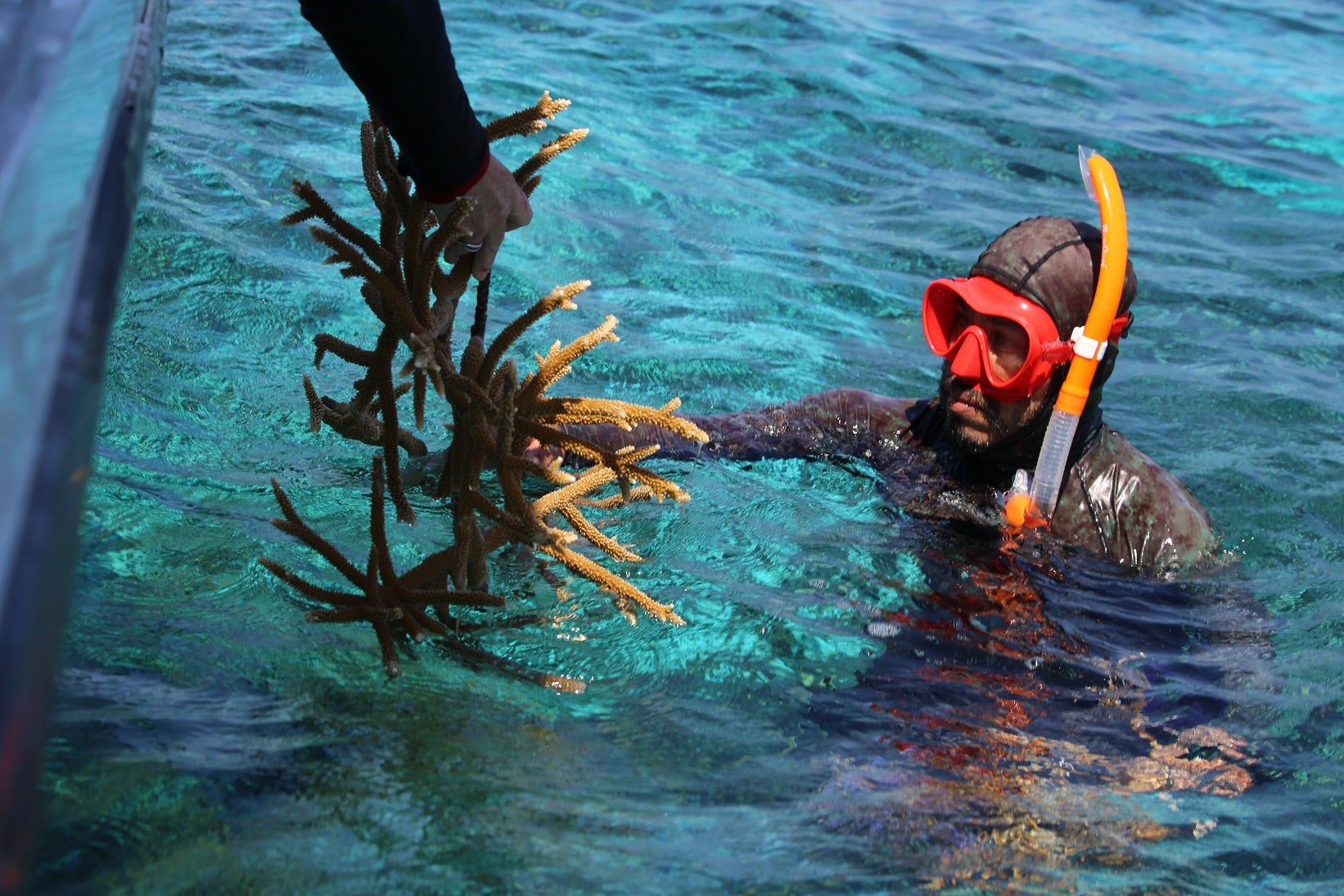 Investment in nature could generate up to $10 trillion in additional annual business revenue and create 395 million new jobs by 2030. Photo: Emily Olivia Bartels Bland/World Bank
Investment in nature could generate up to $10 trillion in additional annual business revenue and create 395 million new jobs by 2030. Photo: Emily Olivia Bartels Bland/World Bank
The air we breathe, the water we drink, and the food we eat all rely on healthy natural ecosystems. So too does our global economy. It is estimated that US$44 trillion of global value added — corresponding to more than half of the world’s GDP — is generated in industries that depend on nature and its services.
As with climate change, the loss and degradation of our planet’s fragile biodiversity affects the poorest economies most. According to a forthcoming World Bank publication, renewable natural capital, including land assets, such as agricultural soil and forests, and blue assets, such as fisheries and mangroves, account for 23 percent of the wealth in low-income and 10 percent in lower-middle income countries.
That’s why the World Bank Group is so focused on reversing biodiversity loss and accounting for nature when making an economic decision. This past year the World Bank’s portfolio[i] included 70 active projects in more than 40 countries tagged with a biodiversity theme, with an estimated net commitment of US$1.18 billion[ii].
That portfolio covers both projects that invest directly in the conservation of species and natural habitats, and those that support livelihoods through sectors such as forestry, fisheries, and agriculture. Examples of this work include the Amazon Sustainable Landscapes Program and investments in sustainable agriculture and landscape management in Brazil and Ethiopia.[iii]
The World Bank follows its Environmental and Social Framework and the IFC has Performance Standards, which explicitly include protecting biodiversity when making investments. IFC has also worked with the Wildlife Conservation Society on a taxonomy to guide investors in this regard.
But the world at large needs to change gears to tackle this urgent problem. That includes seizing investment opportunities to achieve greater collective impact.
According to the World Economic Forum, investment in nature could generate up to $10 trillion in additional annual business revenue and create 395 million new jobs by 2030. Already a number of large global banks and impact investors, including HSBC, Credit Suisse and BNP Paribas have created new biodiversity funds.
So how do we capitalize on these new markets?
Take plastic pollution. In 2020, IFC made its first ever ‘blue loan’ to Indorama Ventures (IVL), a global plastic resin company, to help it achieve the goal of recycling 50 billion plastic bottles a year over the next five years. This advantageous loan will help the company divert plastic waste away from landfills and oceans across five markets – in Thailand, Indonesia, the Philippines, India and Brazil – and to invest in renewable energy and resource efficiency projects.
The financing package for Indorama Ventures comprises a $150 million senior loan from IFC and parallel loans of $150 million from the Asian Development Bank (ADB) and Deutsche Investitions-und Entwicklungsgesellschaft (DEG).
At the World Bank Group, we are leveraging public-private sector collaboration while at the same time developing the kinds of policies, incentives and investments that can systematically address the complex marine plastic pollution problem. By helping create a favorable business environment, the World Bank can open the space for IFC to mobilize private investors in this area.
Without such partnerships, it could be very hard to tackle issues as complex as this one. Microplastics are everywhere: in the ocean, crops, in the air we breathe. Single use plastics - straws, bags and water and soda bottles – are destroying marine life and the impact of this pollution on tourism, fishing and shipping runs into billions.
Further losses are incurred from not recycling most of the plastic waste that litters our environment. Recent World Bank and IFC studies in East Asia show that less than a quarter of the total amount of key plastic resins available for recycling in Thailand, Malaysia and the Philippines are being recycled into valuable materials. More than three-quarters of the material value of plastic is lost – amounting to nearly US$6 billion per year across all countries. This kind of approach is a wasted opportunity.
Further, if we act boldly now, we could protect biodiversity and address climate change at the same time. The Intergovernmental Science-Policy Platform on Biodiversity and Ecosystem Services estimates that 37 percent of the mitigation necessary to meet the goals of the Paris Agreement, can be delivered through nature-based solutions that also generate biodiversity co-benefits.
Our clients understand the opportunity of investing in a low-carbon economy and avoiding the pitfalls of a business-as-usual high-carbon path. Bringing biodiversity and ecosystem services into that equation will not only be positive for our environment, but good for people and business too.
[i] At present Biodiversity portfolio data are not tracked at IFC and MIGA.
[ii] This analysis considers projects where the biodiversity theme amounted to more than 50 percent of total commitment. Also, projects with a biodiversity theme under 5 percent are excluded.
[iii] Project examples
- The GEF-funded Amazon Sustainable Landscapes program (Phase II) has mobilized regional cooperation and US$113 million in GEF funding and US$683 million in co-funding to protect biodiversity and the integrity and resilience of the Amazon. The program is strengthening management effectiveness of 65 million hectares of protected areas, facilitating creation of 4.3 million hectares of new protected areas and promoting sustainable productive practices in 11 million hectares (ASL 2020).
- The Brazil Integrated Landscape Management in the Cerrado Biome has supported adoption of an integrated landscape management approach in the Cerrado, helping 4,000 landholders and agricultural producers adopt low-carbon-emission agricultural practices.
- The Ethiopia Sustainable Land Management Program rehabilitated previously uneconomical and unproductive degraded areas in 135 watersheds, improving agricultural land productivity in some of the poorest communities.



Join the Conversation